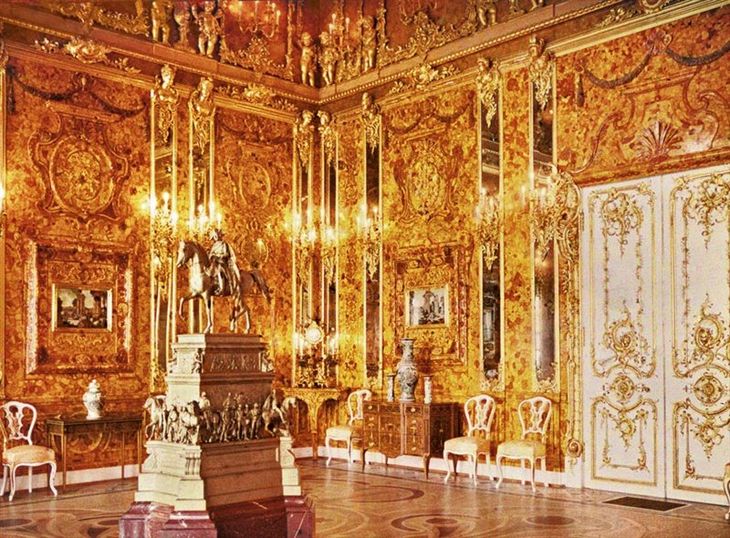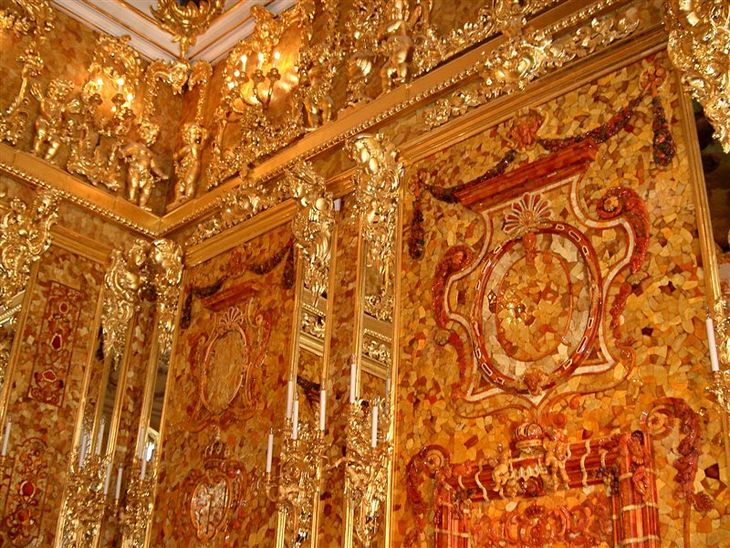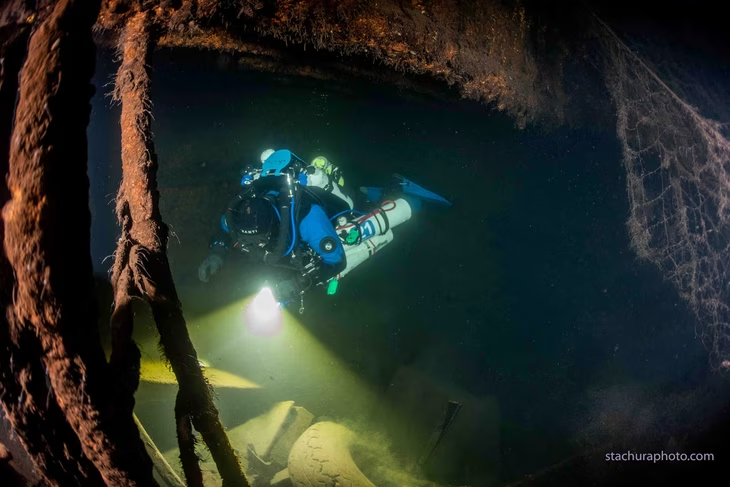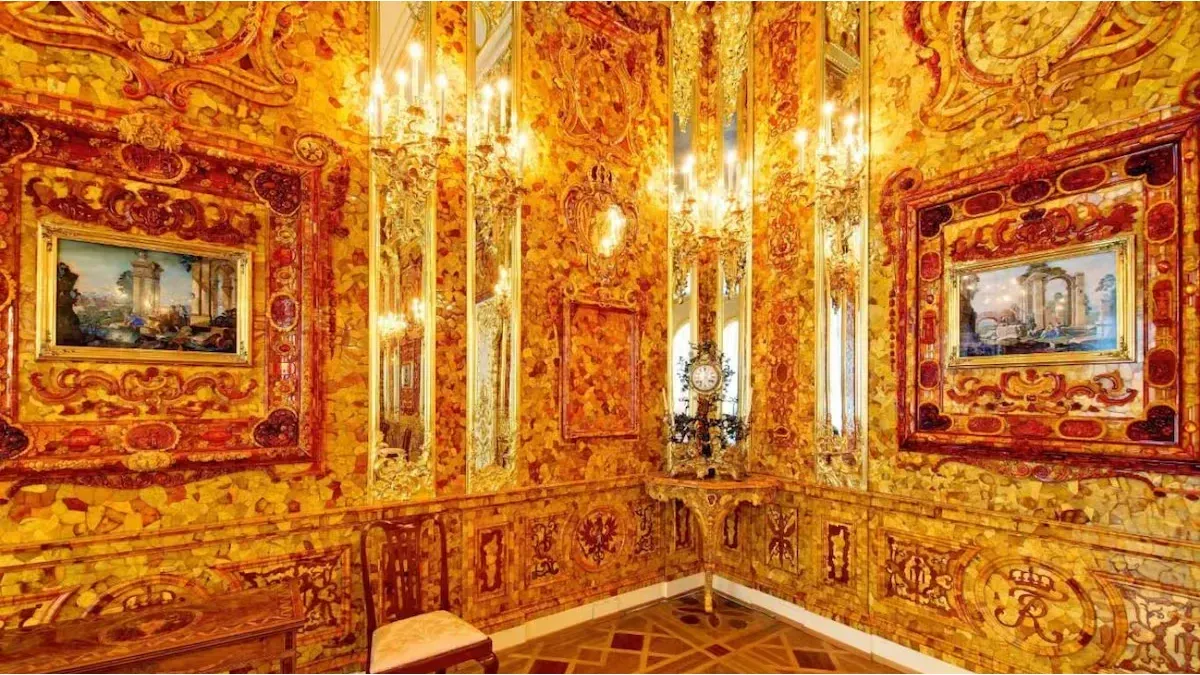The origin of the Amber camera dates back to 1701when Federico I of Prussia commissioned to build a luxurious room in the Royal Palace of Berlin with the walls and furniture covered with amber, a material that was worth, at that time, twelve times more than gold.
It was built with amber panels, gold sheets and precious stones, and ended up being owned by the Russian emperor Pedro I the Great. But, during the Second World Warthe Palace of Catalina was looted, and this treasure, which could reach 450 million dollars, stolen by the Nazis. His final destination was the Führer Museum, but they claim that he never got there. Considered the eighth wonder of the world Because of its unique beauty, its whereabouts remains uncertain.
In the first instance, it was planned to install it in Charlottenburg’s cast Berlin. There, this giant jewel caught the attention of the Tsar Pedro I the Greatwhich was obnubilated for its beauty during a visit to the German city in order to forge a military alliance with Prussia against Sweden.
Pedro I of Russia.jpeg
And in 1717, Federico Guillermo I of Prussia sealed this agreement by giving the luxurious room to his new ally. For this, the room was disassembled and packaged For transfer to St. Peterburg: First by sea and then by land, in 18 sleds thrown by horses. Once there, it was decided to install it in the Palacio de Catalina, located on the outskirts of what was then Leningrad, in the city of Tsárskoye Seaó, summer residence of the tsaries.
On his arrival, 48 square meters of amber panels were added and his decoration was enriched with new mosaics. At the end of his last remodeling, in 1770, six tons of amber panels, abundant amount of gold, innumerable gems, 24 mirrors and a ground of precious wood wrapped a 96 square meter room that housed seventy objects also of this material.
During the following two centuries, the Amber Chamber became one of the Crown jewelry From the Zersy survived intact seven restorations, and even the 1917 revolution.
The Amber Chamber in the Palace of Catalina, in 1917.jpg

The Amber Chamber in the Palace of Catalina, in 1917.
Although everything changed in the Second World War: St. Petersburg was subjected by the Nazis to one of the most cruel sieges in history. This lasted 900 days and more than one million people died. The city did not fall; But about 30 kilometers from there, in 1941, Tsárskoye sealed it.
During the occupation, an operation known as the Nazi Expolio: It consisted of the theft of works of art and other value articles carried out by German officers who were often accompanied by conservation experts not to damage the pieces in the looting. One of the historic buildings that suffered was the Palace of Catalina, home of the eighth wonder of the world.
Due to its dimensions and fragility, the amber chamber could not be evacuated for the Soviets to put it safe, as their furniture and another 20,000 objects of the palace were. In a vain attempt to save it, the authorities covered their walls with wallpaper, on which a layer of cotton and wooden boards was placed, as well as tapestries and blankets.
But, the Germans took little to find her, and barely 36 hours to disassemble and package it In an operation supervised by the art expert, Alfred Rohde. By express order of Adolf Hitler, the singular beauty room had to return to “his true home” in Berlin.
Amber’s camera, a spot of war without finding
A few days later, the ceilings arrived at the Museum of the symbolic Königsberg Castle, where the first king of Prussia, Federico I. There, Rohde had gathered an immense collection of art and stayed for the study and exhibition of the camera Reconstructed. Which remained exposed until allied air attacks began to devastate the city in 1944.
While Königsberg crumbled under the Pumpsthe amber camera was packed in the cellar of a castle restaurant and that was the last time they saw her. No one knows what happened with her.
Detail-one-of-the-people-of-the-verse-reconstructed-of-the-camara-de-Ambar_CB8591b7_800x600.jpg

Detail of one of the corners of the reconstructed version of the Amber Chamber.
When the soldiers of the Red Army took the city, in April 1945, they found no trace of the room among the ruins of the castle. Rohde, who refused to be evacuated and remained with his wife next to the collection to the entrance of the Soviet, did not tell anything. At the end of that year, marriage would die in strange circumstances without revealing the whereabouts of the room, if they knew it.
Although some researchers assumed that this treasure was destroyed in the bombings or after the final assault to the city by the Soviet troops, only few say that the Nazis managed to evacuate it in time to a safe place. During the last seventy years, the Chamber has been sought by hundreds of people and numerous hypotheses about their destination were raised.
Despite the past time, the mystery about the whereabouts of the old camera does not cease. In 2020, a Polish expedition raised all the alarms by ensuring that Amber’s treasure was at the bottom of the Baltic Sea. The ship, called Karlsruhe Steamer, was discovered in September of that year, about 88 meters under sea level, near Ustka’s coast in Poland.
Buzos-Working-in-the-Lugar-Del-Del-SS-Karlsruhe-in-the-Martico-Foto-Thomas-Stachura-Via-Reuters-4LWCC4NODRFN7JSF55KJB3RDE.AVIF

Divers working at the sinking of SS Karlsruhe in the Baltic Sea.
This ship sank on April 13, 1945 after being attacked by Soviet airplanes, and it was believed that it could contain the treasures of the Ambar Chamber because its last game was precisely where the looting was given. However, search weeks did not give any results.
In all assumptions, time plays against the conservation of the amber chamber that, in the absence of the appropriate conditions, could have been reduced to debris. Although the hopes of historians prevail, and they trust that there is still a large number of bunkersmines and secret tunnels, in addition to abandoned palaces, in which the precious treasure could be found.
In 1979the Soviet authorities decided to build an exact replica of the room. Although, restoration works were interrupted due to lack of funds after the fall of the USSR in 1991, but resumed with German funds, and in 2003 It was inaugurated, coinciding with the tricentennial of the foundation of St. Petersburg.
Source: Ambito
I am a 24-year-old writer and journalist who has been working in the news industry for the past two years. I write primarily about market news, so if you’re looking for insights into what’s going on in the stock market or economic indicators, you’ve come to the right place. I also dabble in writing articles on lifestyle trends and pop culture news.




